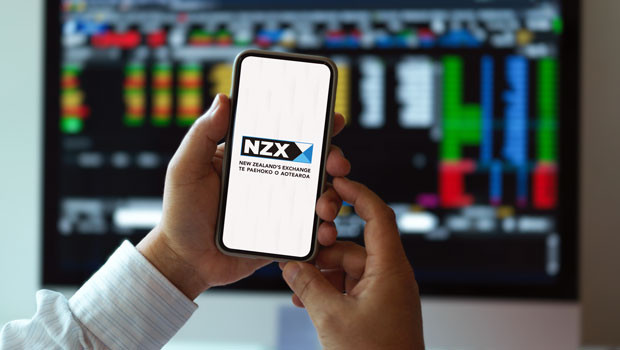
Source: Sharecast
The move boosted global risk sentiment, though reactions across the region were uneven.
New Zealand’s central bank also cut interest rates as expected, adding further divergence to the region’s monetary backdrop.
“US and European stock-index futures dipped, and Treasuries ended a three-day advance due to ongoing worries about the fiscal stability of the US economy,” said TickMill market strategy partner Patrick Munnelly.
“Asian markets erased earlier gains, with Hong Kong stocks being among the significant losers in the region.
“Treasury yields for longer maturities fell, and a 40-year bond auction in Japan experienced the lowest demand since July.”
Munnelly noted that South Korean semiconductor stocks increased before Nvidia's earnings report scheduled for later in the global day.
“Investors remain cautious about the fiscal situation in the US following president Donald Trump's trade war and tax cut initiatives, which have raised alarms about the growing deficit.
“The Federal Reserve has emphasised that it will wait for more evidence before considering interest rate cuts.
“Meanwhile, the ‘sell America’ trend has negatively impacted the dollar, which has declined nearly 7% this year.”
Markets mixed as investors digest rate cuts, economic data
In Japan, the Nikkei 225 edged down 0.015% to close at 37,722.40, with losses led by Mitsubishi Electric, which fell 5.35%, Sumitomo Metal Mining down 3.78%, and Fuji Electric dropping 2.93%.
The broader Topix index was unchanged, inching up 0.001% to 2,769.51.
Mainland Chinese stocks also closed lower - the Shanghai Composite slipped 0.02% to 3,339.93, while the Shenzhen Component declined 0.26% to 10,003.26.
Among the biggest decliners in Shanghai were Yibin Paper Industry, which plunged 10%, Shanghai Yongguan Adhesive Products down 9.98%, and Jiangsu Dongzhu Landscape falling 7.66%.
Hong Kong’s Hang Seng Index fell 0.53% to 23,258.31.
Pharmaceutical and technology names weighed on the index, with Hansoh Pharmaceutical Group down 3.39%, BYD losing 2.68%, and Semiconductor Manufacturing International Corporation (SMIC) dropping 2.51%.
Chinese fast fashion giant Shein was reportedly seeking a listing in Hong Kong after plans for a London initial public offering were blocked by Chinese regulators.
According to sources cited by Reuters, Shein was aiming to file a draft prospectus with the Hong Kong exchange in the coming weeks, and intended to complete the listing before year-end.
South Korea’s Kospi 100 was the standout performer, rising 1.54% to 2,664.60.
Shares of LF Co surged 16.88%, POSCO Future M jumped 13.99%, and Hyundai Heavy Industries climbed 12.43%, helping lift the index to one of its strongest sessions this month.
Australia’s S&P/ASX 200 slipped 0.13% to 8,396.90.
ALS dropped 7.6%, while Mineral Resources and Fisher & Paykel Healthcare declined 5.47% and 4.78%, respectively.
New Zealand’s S&P/NZX 50 underperformed, falling 1.75% to 12,362.26 after the Reserve Bank of New Zealand cut its benchmark interest rate.
Major laggards included Infratil, down 5.94%, Oceania Healthcare off 4.69%, and Fisher & Paykel Healthcare down 4.45%.
In currency markets, the dollar was last down 0.15% on the yen to trade at JPY 144.11, as it slipped 0.05% against the Aussie to AUD 1.5513, while it declined 0.34% on the Kiwi, changing hands at NZD 1.6754.
Oil prices were little changed, with Brent crude futures last up 0.03% on ICE to $64.11 per barrel, and the NYMEX quote for West Texas Intermediate rising 0.07% to $60.93.
New Zealand central bank cuts rates, consumer inflation holds steady in Australia
The Reserve Bank of New Zealand cut its official cash rate by 25 basis points to 3.25% on Wednesday, marking its sixth consecutive reduction as it responded to subdued domestic demand and heightened global uncertainty linked to US trade policy.
One member of the Monetary Policy Committee dissented, preferring to keep rates unchanged.
The RBNZ said it now expected the cash rate to decline to 2.85% by early 2026, implying one or two further cuts in the current cycle.
Governor Christian Hawkesby said there was “no bias” on the outcome of the next meeting, but market pricing pointed to another cut in August.
The bank projected inflation would briefly rise to 2.7% before easing to 1.9% in 2026, with GDP growth seen remaining weak and unemployment peaking at 5.2%.
In Australia, consumer inflation held steady at 2.4% in April, but came in slightly above expectations due to increased travel and private health insurance costs.
The Australian Bureau of Statistics said the monthly inflation figure was unchanged from March but exceeded the 2.3% forecast in a Reuters poll.
Australia’s Reserve Bank had already cut its cash rate last week by 25 basis points to 3.85%, its second reduction this year.
Meanwhile, Japanese government bond yields continued climbing, stirring concerns over capital flight from US markets and potential carry trade reversals.
The 40-year JGB yield stood at 3.318% after hitting a record high of 3.689% last week, according to CNBC, with demand at auction reportedly the weakest since November.
Yields on 30-year and 20-year bonds also remained elevated at 2.914% and above 2.8%, respectively, adding over 50 basis points each since the start of the year.
Reporting by Josh White for Sharecast.com.